-
Content Count
34 -
Joined
-
Last visited
Posts posted by rise
-
-
Guys, we experienced some problems with another camera brands not only IQeye. It seems that problem with switches rebooting to back cameras alive not just linked with IQ. We noticed that problem appeared when cameras powered with external power. When cameras powered by PoE it works fine. And at one site we have Cisco with PoE and Hirschmann without, and one camera model. Cameras works fine on Cisco but periodically we need to reboot Hirschmann where cameras powered by 24 VAC.
Who can suggest any additional information about this problem ?
-
Hi Danger,
i just recently spoke to guys from Exacq support. They use ONVIF 2.0 but that does not mean support all onvif cameras. A list of supported cameras can be found on Exacq.com
Because not all ONVIF cameras have the ONVIF feature set that they need to connect. There are many that do not have motion detection built in (a requirement to integrate with us), or other features.
So you can write a request to them, perhaps they are performing a test with required model currently.
-
Our Cooldomes was shipped and hopefully we will see them soon. Will use them in harsh environments with heat and dust. Let's post here our impressions and experience.
-
I would recommend also as a solution take a look at Avigilon.How much is an Avigilon license?
Best,
Christopher
See in PM Christopher
-
Yes, Exacq takes 1 licence per each analogue channel. Once earlier we requested Exacq about this scheme and they confirmed it.
I would recommend also as a solution take a look at Avigilon. They have 4-analogue channels encoder with 720x576 and 25 fps per each channel. And the price is less in comparison with 4-channel Axis encoder with 25 fps per channel.
Moreover Avigilon takes 1 license for 1 IP channel (i.e. for their 4-port encoder we need one license). Software price could show onself expensive you have to compare full solution, for example price for each analogue channel of encoder on Milestone or Exacq and price per IP channel on Avigilon.
We implemented many systems with Avigilon and their encoders also. 3-year warranty, good image quality, simple user interface and their software with possibilities for further expansions with IP cameras (recently they unveiled 4.6 version ONVIF complaint and broad range of 3rd party IP cameras).
-
Although I have not tried it, the Vivotek cameras claim to write to local storage (SD) or to a mount point (NAS). Certainly inexpensive enough to try out and see. When I get less lazy, i was going to call my supplier and order one to try out.Just understand that Mobotix is a complete NVR solution in each camera. Just because other cameras will write to a NAS, doesn't mean that it will have any playback capabilities. So you my just end up with a bunch of files and then rely on OS time stamp and local media player features to view the recordings, which isn't terrible. IQInvision claims to have NVR features on their higher end cameras but have not seen it and their prices are higher than Mobotix.
I love the idea of the camera writing directly to a NAS, but Mobotix is expensive. My home requirements are for 6 cameras, so you can see that 6 X $1,500 can be out of reach for most homeowners or small businesses. What I did was setup an Atom processor desktop (dual core, 35W consumption, the size of a Mac Mini at 7" square) and run BlueIris. This gives me a central place to view all cameras, a place to record to and a remote view capabilities through it's web server. So not as cheap as getting a NAS for $169, but for $350 I have a pretty decent solution with 6 cameras, 4 of which are megapixel cameras.
Let's contrast
D24M-IT-NIGHT - Outdoor dome camera, L22 lens with fixed focal range, IP65 = 548 Euro
+ outdoor wall mount = 98 Euro
TOTAL for Mobotix = 646 Euro, approx 839,8 USD
IQA10NX-B5 - Outdoor doom camera, varifocal lens 3-12 mm, IP66 = 999 USD
+ outdoor wall mount in package
+ IQRECORDRSW = 99 USD
TOTAL for Alliance = 1098 USD
And in case of indoor application we can use IQ751V3NPNE, it has 1.3 megapixel and varifocal lens 4.5-10 mm = 898 USD
+ wall mount = 5-7 USD
+ IQRECORDRSW = 99 USD
TOTAL for IQ751 = 1004 USD
Let's compare prices with discount but not MSRP prices
And let's remember which of discount for IT range has Mobotix, as I remember it's 20%
IQinVision disctributors know IQinVision discount rate
-
Arecont are made in US but parts from China and cameras are assembled by chinese people (http://www.secnews.ru/photo/index.php?SECTION_ID=316) then (i hope at least) cameras are tested by us people at factory
What is the difference between them and other cameras like IQ that assembled in Taiwan and tested in US?
-
Just as an option - there also IP-coax converters from Nitek like VR124COAX (http://www.nitek.net/networkextenders/vr124coax.html) and VR448COAX (http://www.nitek.net/networkextenders/vr448coax.html). According to Nitek they can work on up to 800 meters with 60 Mbit/s donwload and upload speeds.
-
Does anyone know some megapixels ip cameras in CCD?Now, i just know some with COMS, and there is not so good with color changed.
There are 2, 4.2, 11 and 16 megapixel models from Avigilon (http://avigilon.com/products/cameras-video/#hdproip) as well as IP boxed and dome cameras from Basler (http://www.baslerweb.com/beitraege/beitrag_en_101458.html and http://www.baslerweb.com/beitraege/beitrag_en_101818.html) and Lumenera (http://lumenera.com/products/surveillance-cameras/index.php).
-
So the M12 has auto-focus capability similar to the newer Panasonic cams (Auto Back Focus)? I really really like the ABF feature. Just mount the Pano cam, access the setup menu remotely and do the ABF thing, and it focuses for you.I am thinking of an M12 on the outside of my garage (top center front). The main reason is that I could then run a simple single CAT5 cable to it via the conduit I have already underground. Does it have a built-in heater?
Also, how would the M12 compare to my Panasonic CW484, CP484, and CL934 cams overall, lux wise, etc.? I would hate to sell them (including my HD316 DVR) to fund an M12 (or perhaps V12) or two and not be happy.
The M12's come with a fixed, pre-focused lens that's actually GLUED into the casing. There's no "focusing" anything... and they don't have an auto-back-focus feature like the Panos (and in fairness, probably don't need it).
The D12's (the Dome version) do have focusable lenses... you just rotate them in or out a bit. This is a good thing, because the dome itself can change your focus a little bit, so what looks a bit out-of-focus with the dome OFF, looks in-focus with the dome ON (I'd estimate it's about 1/8 to 1/16 of a lens-turn difference).
As for the heater, there are no moving parts in a Mobotix camera... I've never required a heater in mine (some Mobotix cameras get mounted in some pretty severe-duty locations without freezing).
I know you're thinking of the M12, but you might consider the D12 instead. Changing modules/lenses in the field is a nice option, just in case the view isn't QUITE what you wanted (though the ability to use a standard 35mm SLR camera/lens combo to choose the FOV is very helpful).
And at 50 feet, you're going to want more of a telephoto-type lens. Get out your 35mm digital camera to check FOV before you even THINK about buying anything.
Guys, you wrote a lot about Mobotix features but there isn't about their apertures. We'd like to compare parameters and images with other, but Mobotix just specified 1 lux, 0.1 lux. We work with manufacturers which also didn't specified it for some dome models with integrated lens but they give us detailed information about lens.
-
Does somebody know which of F number have Mobotix lenses?
-
Dear advanet,
in case if you install there monitors with BNC inputs:
i would like to recommend you to try this stuff - http://www.kramerelectronics.com/products/model.asp?pid=35&sf=82
It converts composite video (BNC input) in UTP and then back in composite (BNC output). Indeed it has 2 inputs and 2 outputs as you need.
We have some projects with this equipment and it works stable without failures and images degradation.
If you will use VGA outputs from recorders:
With help of TP100AXR (http://www.kramerelectronics.com/products/model.asp?pid=1417&sf=85#t) you can connect one VGA from your recorder to the first VGA input of TP200AXR, looping VGA output on TP200AXR you can connect to local monitor (if you use it). TP200AXR will transmit the signals via UTP (limit is 200 m, further distances depend on the resolution and cable quality). At remote site you connect it to the your remote monitor. The same for second local and second remote monitor.
As a second variant you can consider the following: 1 Highwire QUAD (http://www.veracityglobal.com/products/ethernet-over-coax/highwire-quad.aspx) in the DVR location. You can connect Ethernet outputs from DVR to Highwire, than Highwire converts network signal for transmission through coaxial cable (on RG-59 you can have up to 270 m) and at monitors location you set up the second QUAD or you can use Highwire with signle Ethernet port (http://www.veracityglobal.com/products/ethernet-over-coax/highwire.aspx) if it's ok for you to display images at one PC
We use Veracity in one of our projects where Highwires transmit images from 16-megapixel cameras. Coaxial distance between two Highwires in this project is 300 m. It works stable as well. We even tried to transmit images from one 16 megapixel camera at maximum parameters - 70 Mbit/s goes through coaxial without failures.
I hope it helps
-
Does anyone have the Avigilon Pro Series cameras? If so what are your thoughts on them, any problems ect.Hi deserteaglexxx, we installed 11MP and 16MP cameras in few systems. Images and cameras are amazing. If you have any technical questions or you need any help in project or configuration please do not hesitate to contact with me. We already done a lot projects on Avigilon and we used the whole range of their products starting from encoders and finishing 16MP cameras.
Images from Avigilon 16MP-HD-PRO-C
Canon 35 mm F2.0
http://img15.imageshack.us/img15/280/74616742.jpg
Sigma 20 mm F1.8
http://img225.imageshack.us/img225/5456/30474960.jpg
and comparison:
2 megapixel camera (1600x1200)
http://img193.imageshack.us/img193/2189/2megapixel12mmlpr.jpg
Avigilon 16MP-HD-PRO-C with Canon 24-70 mm
http://img684.imageshack.us/img684/3045/16megapixel70mmlpr.jpg
-
While you can use the SD card slot, you can always use an inexpensive NAS. I use WD MyBook World Edition, $169 for 1TB, recomended by Mobotix support. You can have between 1 and about 4 cameras per NAS. There are other cameras that can write to local or NAS storage, but only Mobotix provides a complete solution inside the camera where you can review historical events. Other cameras like Vivotek that allow you to write to NAS, only write out files, it does not allow to go back in and review what was writen. Also, the software from Mobotix, should you chose to use it is totally free and supports other cameras. The problem I have with IQinVision is they only support writing to NAS on their most expensive cameras, so you don't have the luxury of mix & match on their cameras.With 48 cameras, you can record onto a single PC, but the network has to broken into multiple subnets, hence the VLAN requirement or just buy 4 12-16 port switches and keep them seperate. The server likely has to have multiple sockets of quad core chips and a good amount of memory. Then you probably need external storage to allow for multiple terabytes of data, say 100GB per camera, that's 5TB of usuable storage, or really a 8TB NAS with Raid 5. Did you think you can have 48 multiple megapixels cameras on one network? I would guess that such a system, with software included would run $20-30K, just guessing. I would have the software vendor size the system, if a centralized approach is desired. Now this is a pretty complex system and while something like a HP Proliant will stay up for years, most people cheap out. A lot can go wrong, having a centralized solutions just makes it a single point of failure.
Thewiredguys, I would agree that their software is not the easiest to use, but MX ControlCenter is very functional. Never had trouble finding what I needed to find, but I'm a tech geek, so it doesn't bother me.
Dear buellwinkle, until topic starter gives us additional tasks from customer like online viewing, storage duration, pixel density requirements, we can argue here infinitely about solutions offered from me and you.
-
Trouble with mixing camera brands is you bypass the decentralized approach of Mobotix which is the reason for chosing them. Also, finding the best camera for specific situations may cost you more wasted time learning different cameras, dealing with different support people.Imagine if you will, that with Mobotix, you only need the network to view a camera live or to view historical events. You only need a PC capable of viewing, nothing else. The PC can be a cheap PC, tiny hard drive and a nice monitor. If it breaks, who cares, the camera can be viewed from any computer on the network. With a centralized approach, you need a computer capable of analyzing all those streams, writing multiple streams to disk, and sizing such a system won't be easy, not to mention the proper switches with vlan support and multiple network adapters on the PC, not only does it get expensive, it gets complicated. Then consider your failover, that PC becomes your single source of failure, so having a failover server can get expensive.
Also, you seriously can't compare an Acti to a Mobotix for image quality, not even in the same league.
Dear buellwinkle,
Trouble with mixing camera brands is you bypass the decentralized approach of Mobotix which is the reason for chosing them. Also, finding the best camera for specific situations may cost you more wasted time learning different cameras, dealing with different support people.
I agree with you, Mobotix really has own unique approach in images recording. It’s useful but we shouldn’t use it in each application.
Finding the best camera for specific situations may cost more wasted time. [/b]
Yes. But in this case we can choose proper camera for each area – why we should take 3 megapixel indoor/outdoor Mobotix camera for any indoor area where we can take 2 megapixel indoor camera from different brand? This approach can save money for NVR and high performance workstation and CCTV monitor for operator (if retail location works non-stop and customer requires permanent operator).
Munque, which of requirements have customer to viewing and recording?
Imagine if you will, that with Mobotix, you only need the network to view a camera live or to view historical events. You only need a PC capable of viewing, nothing else. The PC can be a cheap PC, tiny hard drive and a nice monitor. If it breaks, who cares, the camera can be viewed from any computer on the network.
If I understand you correctly you mean approach when camera record video on itself. Maximal capacity of memory card supported by Mobotix is 32 Gb. IQeye, Axis and Basler also provide the same capability. And we can view video also from any PC from the network.
PC can be cheap but I don’t think that customer wants to connect to one camera if he wants to view images online. If he will view images from all cameras simultaneously he will need high-performance workstation with enough memory amount, processor and video card to visualize all cameras.
With a centralized approach, you need a computer capable of analyzing all those streams, writing multiple streams to disk, and sizing such a system won't be easy, not to mention the proper switches with vlan support and multiple network adapters on the PC, not only does it get expensive, it gets complicated. Then consider your failover, that PC becomes your single source of failure, so having a failover server can get expensive.
Computer capable of analyzing all those streams
NVR analyzes streams only if it performs motion detection (as you know almost all well-known IP cameras perform motion detection on itself) or video analytic at itself. In other cases it just records images and provides streams for viewing. Yes, with 48 cameras you can’t view and record images on the same NVR, you will need separate workstation or PC for viewing.
the proper switches with vlan support and multiple network adapters on the PC
We don’t need here VLAN if it is separate network dedicated for video surveillance.
Multiple network adapters on the PC
You will need just one gigabit port on NVR. If customer wants to view images in separate corporate network you will need second gigabit port. But you can also install second Ethernet card on customer’s PC and connect it to the video surveillance network. Here you have different ways and at this time NVRs or servers provided with two gigabit ports by default.
And let’s back to the decentralized approach – maximal capacity of SDHC memory card supported by Mobotix is 32 Gb. At 32 Gb according to this page http://www.mobotix.com/eng_AU/Products/Camera-Functions/Frame-rate we take 1.2 Mbit/s for 1.3 megapixel resolution. But there isn’t any information is it stream without motion in scene or with it.
Anyway at these parameters you can store video for 7 days maximum with 8-hours recording per day.
I estimated it in 3 calculators:
1 camera, 15 kb image size, 10 fps image rate, 7 days to store, 8 hours recording per day, 100% motion, disk space = 28.84 Gb, bandwidth = 1.23 Mbit/s
Second one
http://www.exacq.com/evCalc/exacqVisionCalculator.html
1 camera, MPEG4 (sorry, there isn’t option to choose MxPEG. I fit data to 1.2 Mbit/s from Mobotix page), 6 ips, 33% motion, 24,414 kb image size, 1.144 Mbps bandwidth per camera. Required disk space = 59,937 Gb (includes 30 Gb OS partition). Exclude it and required disk space is 29,937 Gb. Almost the same like at Milestone page
Third one is storage calculator for SeeTec VMS
1 camera, MPEG4, 7 days recording, MPEG4 bandwidth is 1200 kbit/s, 8 hours recording = 28.84 Gb.
Of course there are approximate estimations but what if we need more than 7 days or when we take 3 megapixel resolution. For sure this quantity will be higher especially if there is a lot of motion in the area like in retail location and customer want to store longer… Mobotix will also use centralized approach.
Then consider your failover, that PC becomes your single source of failure, so having a failover server can get expensive.
First of all here we use specialized NVR (like Exacq or Geutebruck) or 3rd party server (HP, Dell) that intended for work in 24x7 mode and have high-quality components. The first device in NVR that can fail is HDD. Here we shouldn’t use consumer PCs and HDDs that intended for 8-hours work per day. NVR and 3rd party server manufacturers power their NVRs with server HDDs that intended for work in mode 24x7. For now we can use RAID mode for additional reliability that prevent video loss in case of HDD failure. Or if we haven’t RAID option we change failed HDD with new one here we loss video but all is depend on customer – more reliable system is more expensive. Also there is the possibility to control HDDs status if you want support work of your system without any failures.
Also, you seriously can't compare an Acti to a Mobotix for image quality, not even in the same league.
I’m not against Mobotix, it’s possible to use it in this project, but not in all areas. Of course the last word of course is the customer’s word but they he also should know what he gets.
-
I am looking to install cameras inside a retail location.It would require about 48 regular ir cameras to give coverage throughout the store and outside in the parking lot.
I was looking to install Mobotix decentralized cameras but the cost is holding me back.
Any thoughts on this brand? Maybe a different and cheaper brand for an ip system?
Dear munque, depending on each task you can shoose proper solution for you. As you have many cameras in your system you can choose different resolution for each according to requirements to the image from camera (calculate it through pixels per feet/meter). If you will use VMS that support different verdors you can mix and match cameras with different resolutions. Consider different manufacturers and don't stop at Mobotix, you can use Mobotix cameras in the VMS system with other, for instance with Axis, IQeye and other cameras.
If you need cheaper you can consider ACTi - but take into account - maximum 1.3 megapixel. Meantime you would have places where you better would install one 3 or 5 megapixel camera to cover larger area instead of few 1.3 megapixel cameras. Also you can look at hybrid solutions with analog cameras on non-critical places like general overview or any rear door or small hall. Here you can also use IP cameras with VGA resolution.
All depending on budget and customer's requirements.
-
Here's a comparison of a Panasonic HCM735a (left) and an Axis M1114. Both about the same price when you add in the housing costs on the Axis, both 1MP camera, both have h.264. I used to think the Panny was OK, but now I think it's not so OK.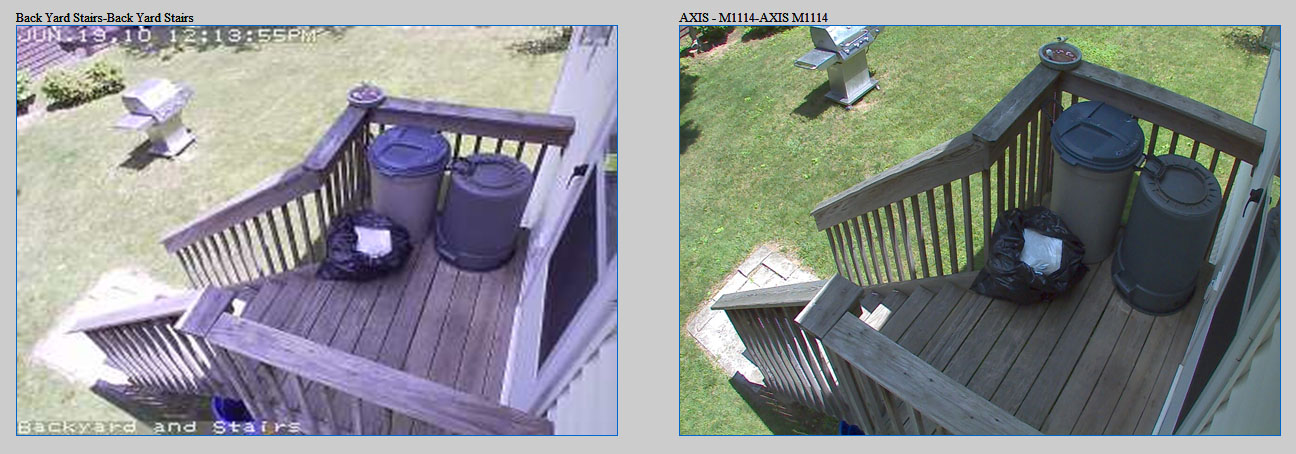
What housing are you using? Cheap Chinese or something special? Full size or compact?
bpzle, it seems that Panasonic has lower resolution than Axis. Images are very different, or you have set very low bitrate amount for H.264 on Panasonic. Axis is clearly better if we compare image quality (contrast, color reproduction etc.).
-
Kool .. though that 4cif camera looks out of focusRory, IQeye 752 has 2 outputs: 1 x RJ45 and 1 x BNC for set up. It's the same lens and the same scene adjustments, therefore if 2 MP image looks good, analogue image should be the same - just smaller resolution.
-
IQeye 752
4CIF resolution from IQeye 752 BNC output. Image was retrieved through Avigilon ENC-4PORT
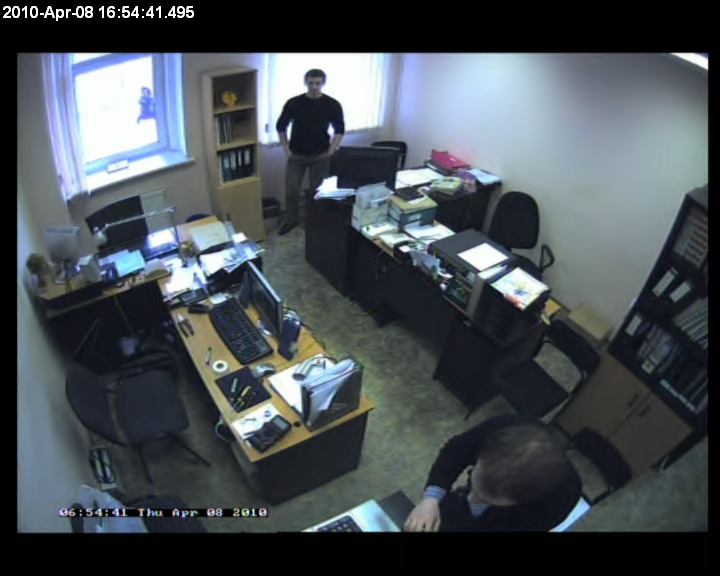
1600x1200 resolution
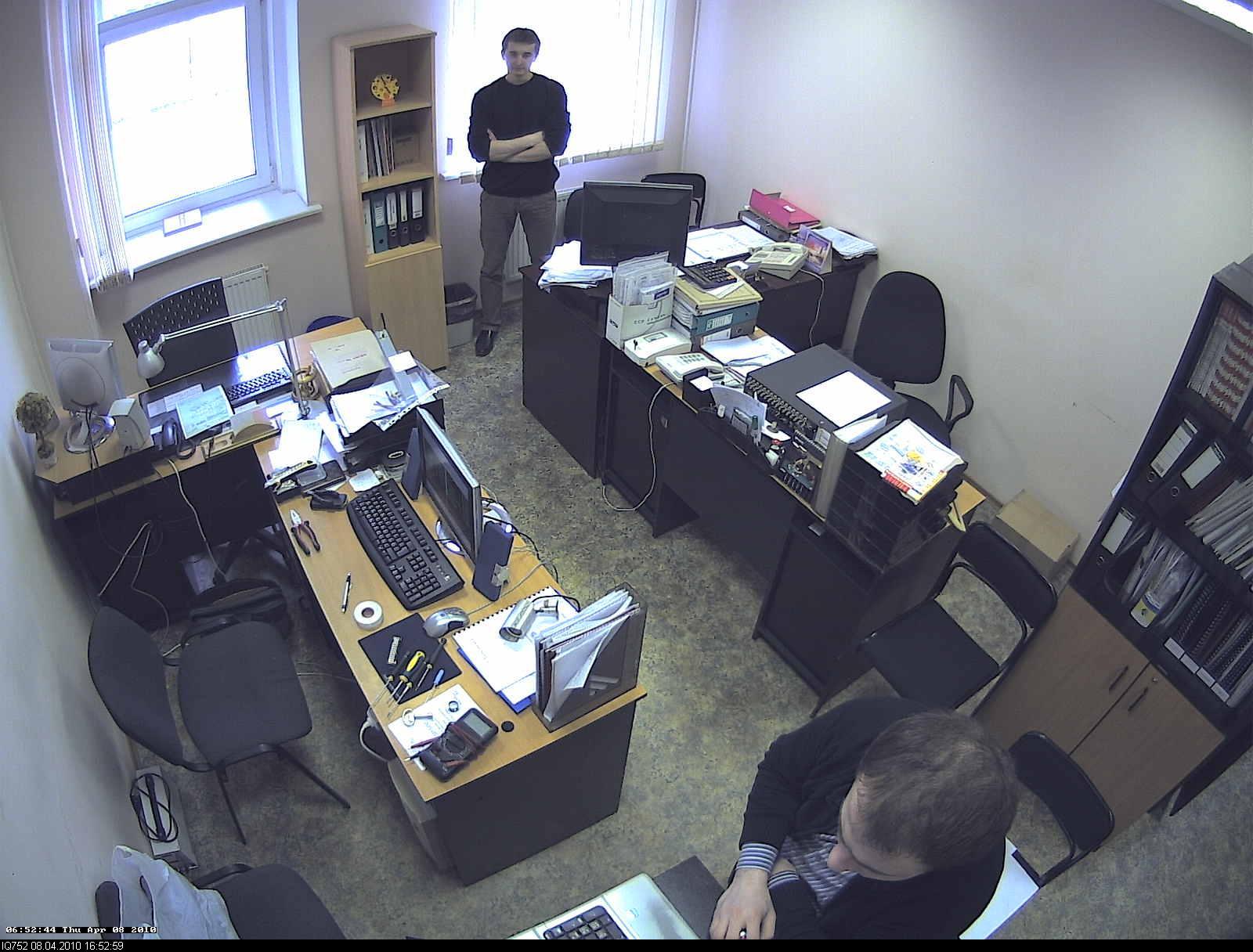
Comparison between 720x576 and 1600 x 1200
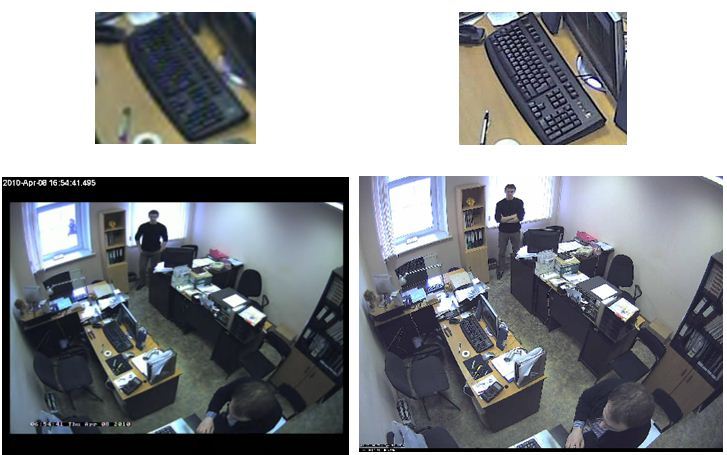
-
Resolution comparison2 megapixel camera (1600x1200)
http://img193.imageshack.us/img193/2189/2megapixel12mmlpr.jpg
Avigilon 16MP-HD-PRO-C with Canon 24-70 mm
http://img684.imageshack.us/img684/3045/16megapixel70mmlpr.jpg
Seems like an awful lot of money for a car park
BUT appreciate the comparison
It's car park near our office We made a comparison and then we installed 16MP-HD-PRO-C and 11MP-HD-PRO-C in other city unfortunately.
But due to some "accidental scratches" at cars on our car park in some cases high resolution can help to resolve a problem with guilty driver.
Another comparison is on the way. There we move from car park to our office
-
Resolution comparison2 megapixel camera (1920x1080)
http://img193.imageshack.us/img193/2189/2megapixel12mmlpr.jpg
Avigilon 16MP-HD-PRO-C with Canon 24-70 mm
http://img684.imageshack.us/img684/3045/16megapixel70mmlpr.jpg
What 2MP camera is that?
It's AV2100. I confused with resolution, it has 1600x1200.
-
rise, I get "Link appears to be broken" on the second link in each post.Thank you man,
i revised links.
-
Resolution comparison
2 megapixel camera (1600x1200)
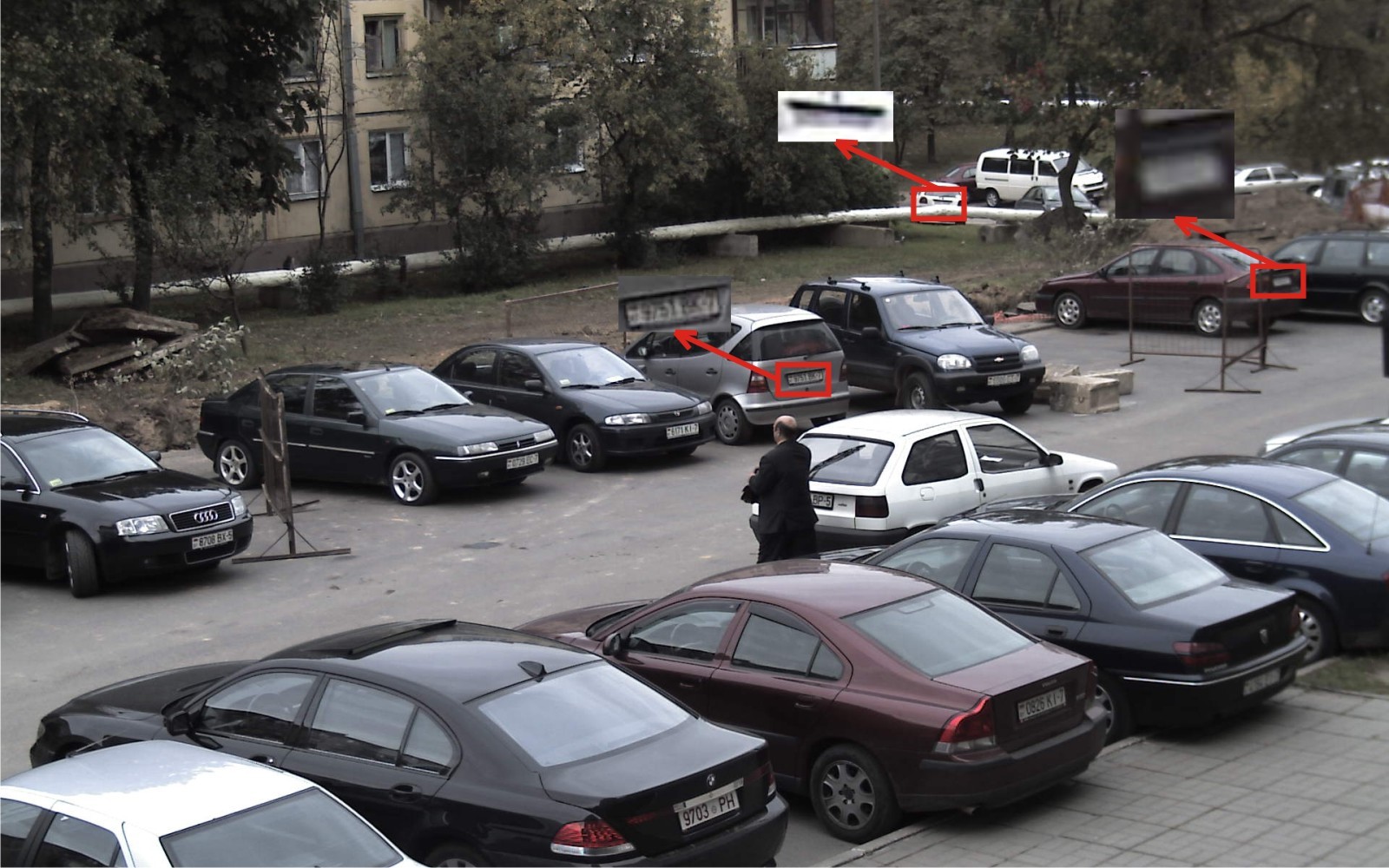
Avigilon 16MP-HD-PRO-C with Canon 24-70 mm
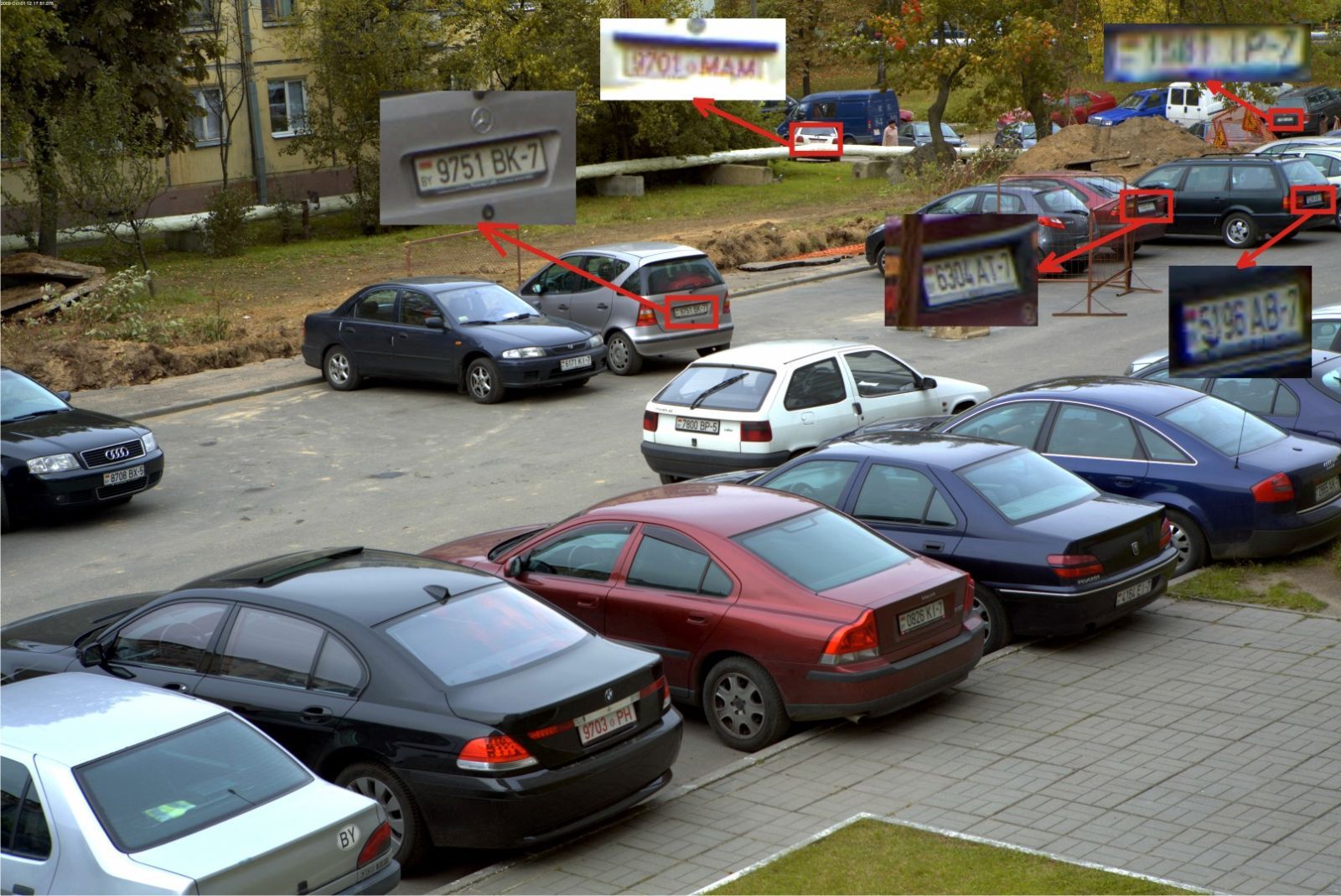
-
Images from Avigilon 16MP-HD-PRO-C
Canon 35 mm F2.0
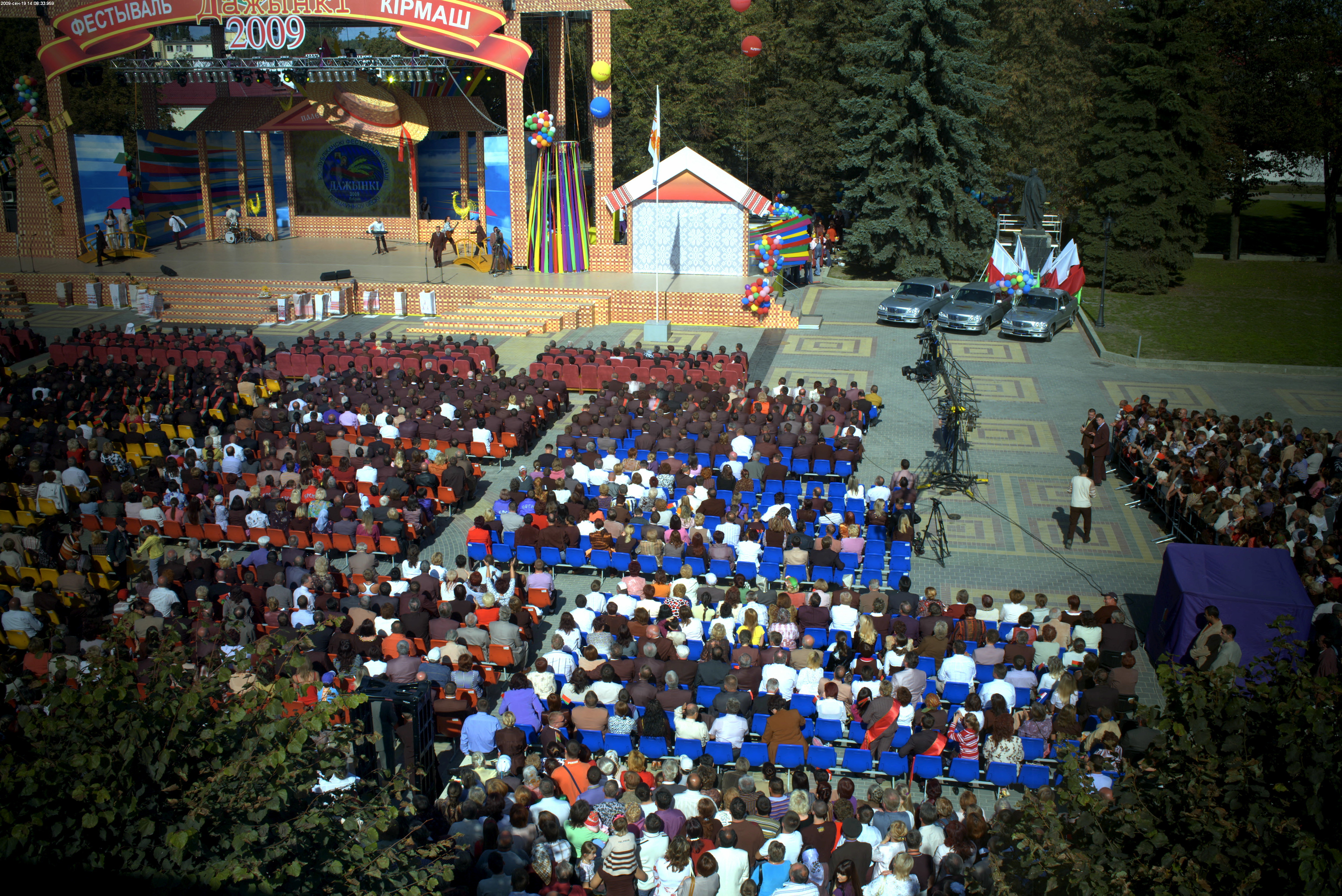
Sigma 20 mm F1.8
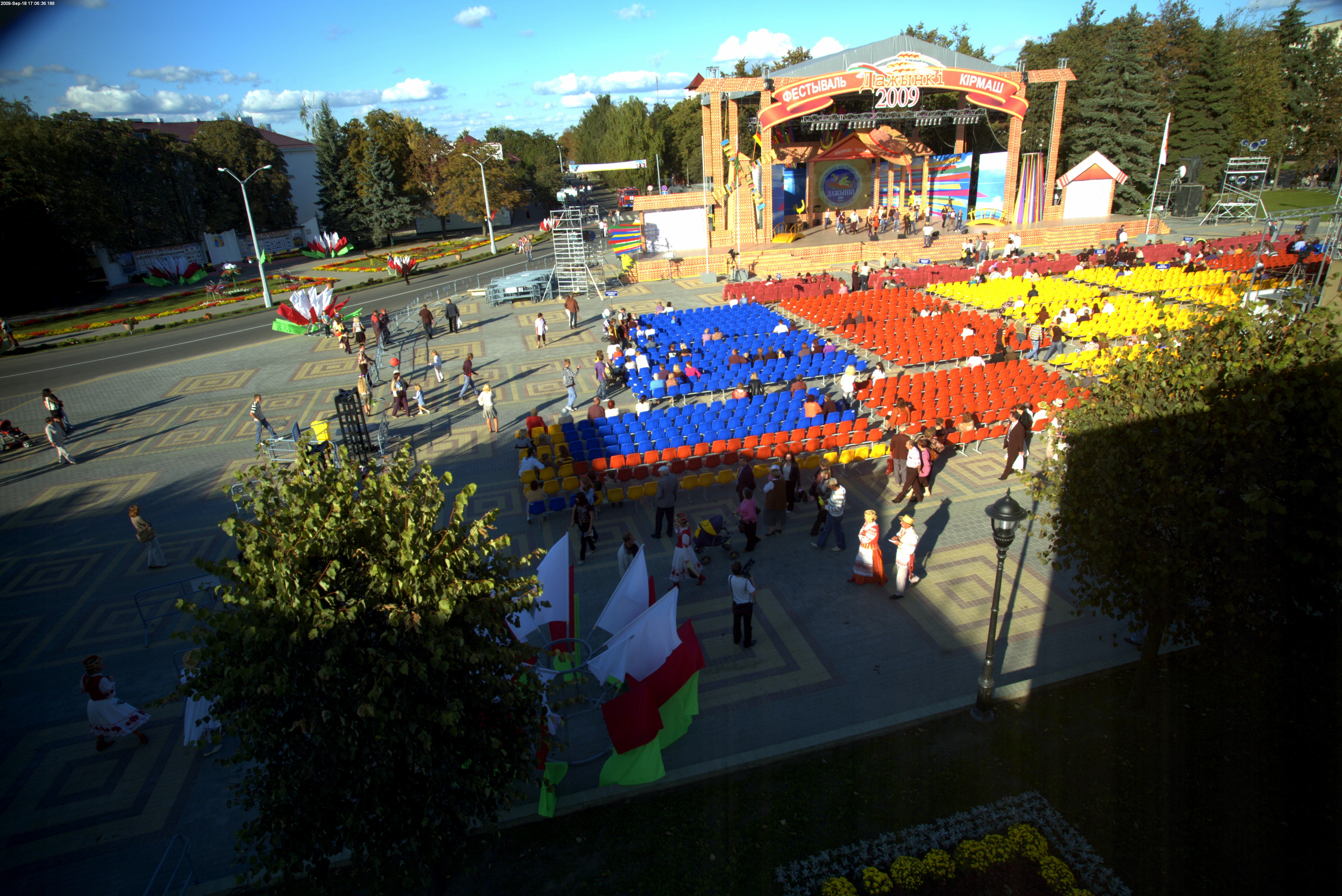



Can mjpeg and h.264 both be recorder to one nvr or nas?
in IP/Megapixel Cameras and Software Solutions
Posted
Dear jisun, recording depends on software. So if your software supports MJPEG and H.264 from your camera and moreover it allows to record as example normal mode and alarm mode in two different formats then it's possible. There are cameras which allow to generate streams with different compression formats simultaneously. So you can record one stream in MPEG and the second in H.264.
You can easily connect your Class 1 device in PoE switch. Switch or device (it depends on switch and device) shall provide or get by itself required PoE Class.